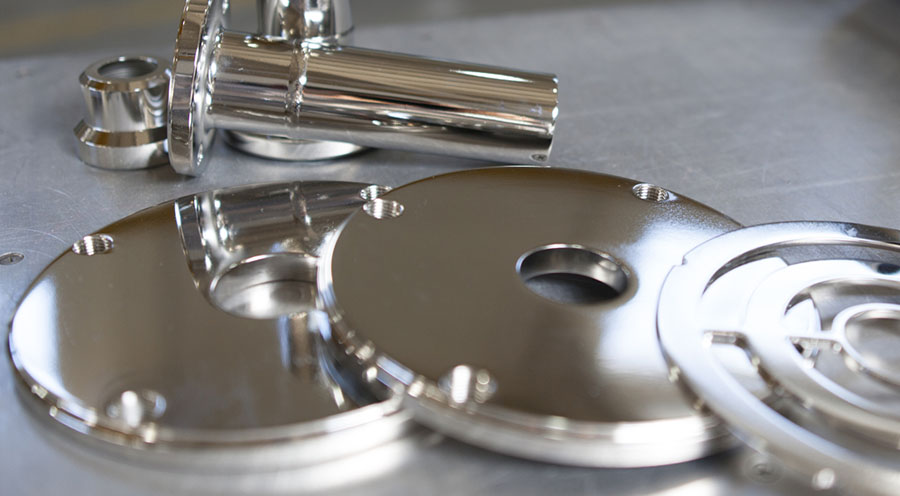Steel has become an important alloy material used in various industries, from construction to military, due to its simple manufacturing, metal strength, customizability, and durability. Alloy steel and stainless steel are the top types of steel available in the market, and manufacturers often compare them when their target products require steel.
However, after understanding the respective properties of these two types of steel, you can successfully choose the appropriate steel among them. The comparison between this alloy steel and stainless steel will help you better consider their different characteristics.
Alloy Steel
Alloy steel is a type of steel that contains more than one alloying element. Whenever each element is added, new features are usually introduced or certain material properties are improved. Generally speaking, all basic steels contain iron and a small amount of carbon. Chromium is a common alloying element that manufacturers add to other elements to enhance corrosion resistance.
Other common elements suitable for alloy steel include vanadium, nickel, manganese, molybdenum, titanium, and tungsten. The specific elements added to alloy steel often determine its properties. For example, manganese can improve ductility, wear resistance, and hardenability of alloy steel. On the other hand, chromium enhances the toughness, hardness, and wear resistance of alloy steel.
Common alloy steels include high alloy steel, low alloy steel, martensitic aging steel, and tool steel.
Stainless Steel
Stainless steel is an alloy steel with a chromium content of at least 10.5%. The chromium element gives stainless steel stronger corrosion resistance, making it suitable for a wide range of applications from medical equipment to cookware. In addition, due to its unique functionality, it has become a common choice for consumers and businesses. However, it is worth noting that stainless steel has different grades and qualities.
Common stainless steels are divided into austenitic stainless steel, martensitic stainless steel, and ferritic stainless steel.

Alloy Steel VS. Stainless Steel
Alloy steel and stainless steel both offer excellent strength and durability, they have distinct properties that make them suitable for different purposes. Let’s explore the differences between alloy steel and stainless steel to understand their unique characteristics and applications.
1. Composition:
Alloy Steel:
Alloy steel is a type of steel that contains various alloying elements such as chromium, nickel, molybdenum, vanadium, and manganese. These alloying elements are added to enhance specific properties such as hardness, toughness, and corrosion resistance. Alloy steel is known for its high strength, hardness, and wear resistance, making it ideal for applications requiring heavy-duty performance.
Stainless Steel:
Stainless steel is a steel alloy that contains a minimum of 10.5% chromium by mass. The addition of chromium forms a passive oxide layer on the surface of the steel, which provides excellent corrosion resistance. Stainless steel also contains varying amounts of other alloying elements such as nickel, molybdenum, and titanium, which further enhance its properties. Stainless steel is prized for its corrosion resistance, aesthetic appeal, and hygienic properties, making it suitable for applications in harsh environments and industries such as food processing, chemical processing, and medical equipment.
2. Corrosion Resistance:
Alloy Steel:
While alloy steel offers good corrosion resistance, it is not as corrosion-resistant as stainless steel. Depending on the specific alloy composition, alloy steel may be susceptible to corrosion in certain environments, especially in the presence of moisture, chemicals, or saltwater. Proper coating or surface treatment may be required to enhance the corrosion resistance of alloy steel components.
Stainless Steel:
Stainless steel is renowned for its exceptional corrosion resistance, thanks to the passive chromium oxide layer that forms on its surface. This oxide layer acts as a protective barrier, preventing rust and corrosion even in harsh conditions. Stainless steel is highly resistant to corrosion from moisture, chemicals, acids, and salts, making it the preferred choice for applications exposed to corrosive environments.
3. Strength and Hardness:
Alloy Steel:
Alloy steel is prized for its high strength, hardness, and toughness, making it suitable for demanding applications such as automotive parts, machine components, tools, and industrial equipment. Alloy steel can be heat-treated to achieve specific mechanical properties, including increased hardness and strength.
Stainless Steel:
Stainless steel exhibits good strength and hardness, although it generally has lower tensile strength and hardness compared to alloy steel. However, stainless steel offers excellent ductility and toughness, along with its corrosion resistance, making it suitable for a wide range of structural, architectural, and decorative applications.
4. Cost:
Alloy Steel:
Alloy steel tends to be more cost-effective than stainless steel, especially for applications that do not require corrosion resistance. The lower cost of alloy steel makes it a preferred choice for large-scale manufacturing and industrial applications where strength and durability are paramount.
Stainless Steel:
Stainless steel is generally more expensive than alloy steel due to its higher chromium content and specialized production processes. However, the superior corrosion resistance and longevity of stainless steel can often justify the higher initial cost, particularly for applications where durability and hygiene are critical.
Conclusion
In summary, both alloy steel and stainless steel offer unique advantages and are suitable for a variety of applications. Alloy steel excels in applications requiring high strength, hardness, and wear resistance, while stainless steel shines in corrosive environments where durability, hygiene, and aesthetics are paramount. Understanding the differences between these materials is essential for selecting the right material for your specific application requirements.



